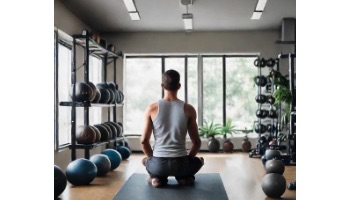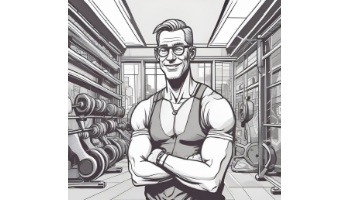 The human body is multi-planer, meaning that unlike say, a robot’s body, humans can move smoothly and seamlessly in a wide variety of directions and combinations. At the same time, much of our daily movement is repetitive and within a narrow range. The result is poor posture, over-stressed joints, and tense muscles. Your daily exercise though can be a chance to make up for this lack of movement diversity and, as a result, bring a lot of relief to nagging aches and pains.
The human body is multi-planer, meaning that unlike say, a robot’s body, humans can move smoothly and seamlessly in a wide variety of directions and combinations. At the same time, much of our daily movement is repetitive and within a narrow range. The result is poor posture, over-stressed joints, and tense muscles. Your daily exercise though can be a chance to make up for this lack of movement diversity and, as a result, bring a lot of relief to nagging aches and pains.
Joints Need To Move, And Not Just The Way They Always Do
How often do you reach your hands all the way up overhead? Most people do it at most twice a day, once in the morning when they put on a shirt and once in the evening when they take it off. The rest of the day, their hands stay at or below shoulder height. That’s a wide range of motion for the shoulders that the average person almost never uses, which is one of the reasons shoulders can be so problematic. In the controlled environment of the gym, though, you can prioritize movement that you don’t get enough of. For example, rather than relying on exercises like push ups and bench press for your pressing staples, you can focus instead on building your skill with overhead exercises like shoulder presses.
The same is true for the lower body. If you are like most people, you spend the majority of the day sitting, which shortens the range of motion you have access to in the hips. In the gym, seated machines like leg press, leg extensions, hamstring curls, etc. only add to the time in a chair. Instead, work on learning full depth squats and deadlifts, which will get your hips back to moving through their full range.
Add A Little Diversity, Carefully Of Course
Have a look at your own routine. Is it diverse with lots of ranges of motion, especially ones you don’t do in everyday life, or is it loaded with the same old exercises that feel familiar and comfortable? If so, find a way to mix things up.
Of course, bear in mind that new ranges of motion will be foreign and difficult for your body, which means you’ll probably need to do some serious work mobilizing. You’ll also want to be careful as far as intensity goes. A movement professional like a good personal trainer or a physical therapist might be an important investment to consider. It’s worth the investment though, both in time and money, because joints that move to their full capacity are happy joints.


